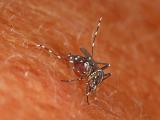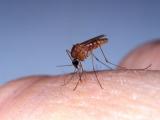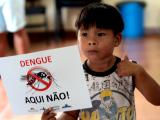May 7, 2010
Researchers find possible cause of severe second dengue infections
Infectious disease experts have long puzzled why people who are infected for a second time with a different strain of dengue virus have a more severe illness course, but new findings in the latest issue of Science may provide a clue. Researchers from Imperial College of London report that they have identified a set of antibodies called precursor membrane (prM) protein that "awaken" during the first infection and help infect more cells during the second infection, the college said in a press release. Dr Gavin Screaton, the study's lead author, said in the statement that the findings will help with vaccine development, because scientists can avoid including prM in any future vaccines. "Our new research gives us some key information about what is and what is not likely to work when trying to combat the dengue virus," he said. "We hope that our findings will bring scientists one step closer to creating an effective
vaccine." Dengue fever is a mosquito-borne viral disease found in tropical and subtropical regions. The virus occurs in four serotypes, and infection with one induces immunity only to that serotype. A second infection with a different serotype increases a person's risk for dengue hemorrhagic fever, which involves bleeding and the possibility of life-threatening shock.
May 6 Imperial College of London press release
May 7 Science abstract
WHO reports progress toward eradicating guinea worm disease
The World Health Organization (WHO) said today that though the world won't meet the goal of eradicating the parasitic disease dracunculiasis (guinea worm disease) this year, significant progress has been made, with disease transmission interrupted in 8 of the 12 African countries where it is endemic. The WHO published a status report on dracunculiasis in today's issue of its Weekly Epidemiologic Record. The disease is spread by drinking water that contains fleas that have ingested Dracunculus larvae, the WHO said. In humans, the larvae invade body tissues, where they grow before emerging through the skin. There is no vaccine or treatment, and the only prevention is protecting and filtering water sources. In 2004 at the World Health Assembly countries signed a declaration to eradicate the disease by 2010. In addition to the eight countries that have interrupted transmission, three more are close to reaching that
goal, the WHO said. Sudan, with the world's highest number of cases is the only country in which transmission interruption doesn't appear to be a realistic near-term goal. The WHO said the passing of the eradication target date signals a need to reassess the situation and move forward with new efforts. It added that elimination is still a realistic goal.
May 7 WHO Weekly Epidemiologic Record report
WHO dracunculiasis background
















